In collaboration with the UND History Department, we are gathering 150-mini essays on 150 historic facts about Grand Forks. This page will be updated gradually as we move towards the 150th Anniversary of Grand Forks.
Old Water Treatment Plant
Susan Caraher
The city’s first water infrastructure, the Waterworks Power House, appears on the 1888 Sanborn Fire Insurance map on the east side of the intersection of S. Third Street and Franklin Avenue. It was moved to the opposite side of S. Third with the construction of a new facility in 1939, and subsequent phases in 1956, 1968 and 1984. The expansion and modernization of the critical infrastructure reflects City’s response to the post war population boom and development to the south, and addressing the federal standards for water safety. Mayor Oscar Lunseth oversaw the first major expansion in the 1950s when an agreement was reached between Grand Forks and the Department of Defense to provide water to the newly established Grand Forks Airforce Base fifteen miles to the west. Badly inundated in 1997, the complex was finally decommissioned in 2020 with the construction of a new facility west of the interstate.
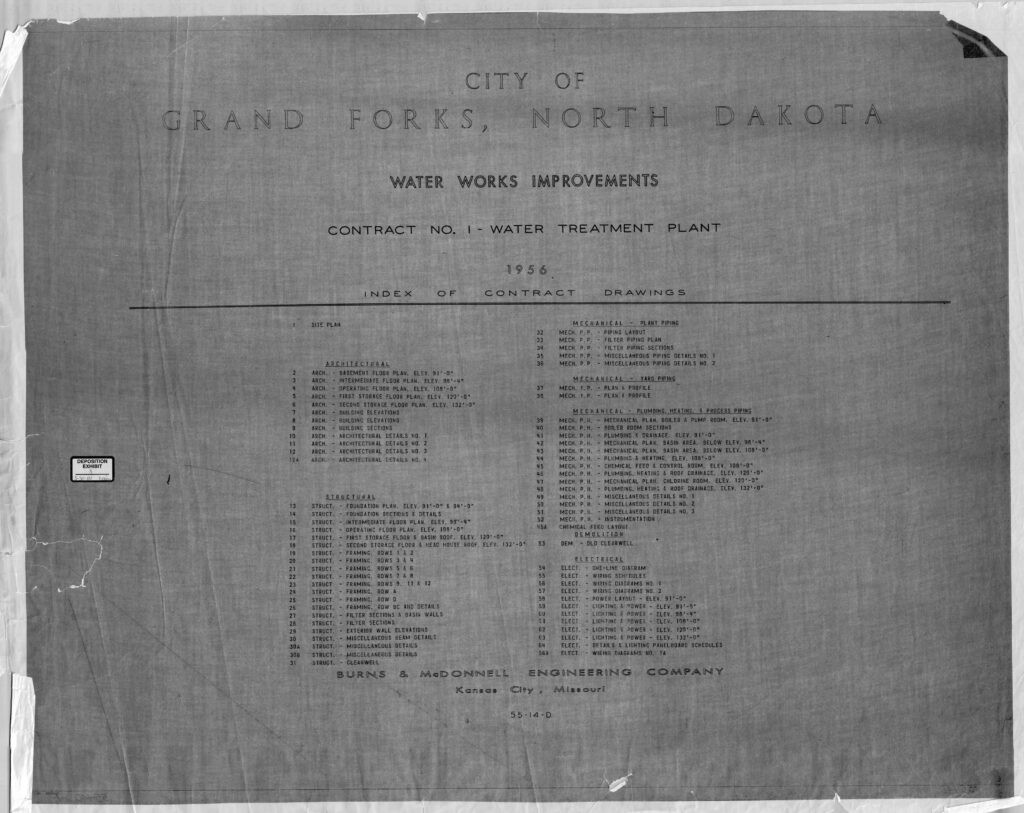
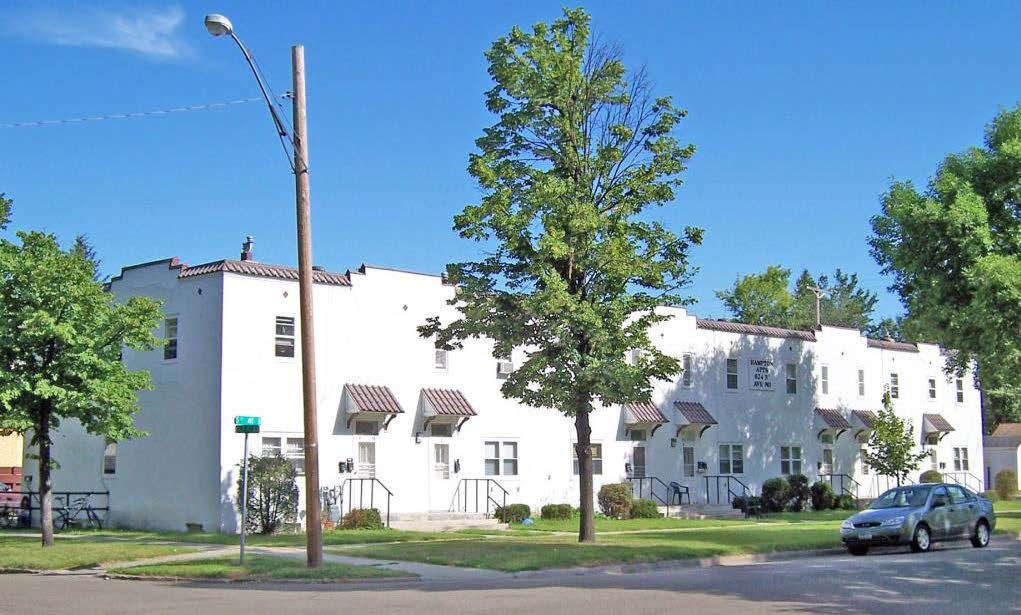
The DeRoche Block (now Hampton Apts)
Susan Caraher
The DeRoche Block on Fifth Avenue N. is a Mission/Spanish Revival-style apartment building constructed between 1892 and 1897 just prior the Second Great Dakota Boom. Its historic name reflects the building’s original owner, Leon DeRoche who also owned a drug and jewelry store, and later bicycles. It is the only standing turn-of-the-century apartment block that is not part of a historic district and it is believed to be one of the oldest standing apartment buildings in Grand Forks, predating the better-known Dinnie Apartments and Skarsbo Apartments. The wood-framed stucco building originally contained seven two-story apartments which were later divided into fourteen. It was constructed in the working class Near Northside Neighborhood largely surrounded by single family homes. Census data provide valuable details of the socio-cultural makeup of the residents showing a range of ethnic backgrounds, occupations and family units, revealing more of Grand Forks immigrant, early settlement and underrepresented histories.
J.F.T. O’Connor, U.S. Comptroller
(Summarized from Near Northside Neighborhood Historic Tour, 2009)
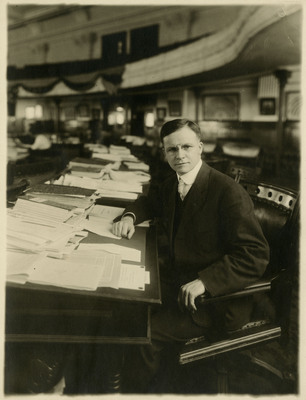
President Franklin D. Roosevelt visited Grand Forks in October 1937 where he heaped praise on the Near Northside Neighborhood’s most famous son, J. F. T. O’Connor, noting, “he kept the banks sound and your money safe.” That year, O’Connor called for that to be his epitaph, and he is buried at Calvary Cemetery. O’Connor served as U. S. Comptroller at Roosevelt’s request. A lawyer, he had taught at the UND Law School and served as a legislator in 1917 and 191 before an unsuccessful gubernatorial race and then U.S. Senate bid. After moving to California he joined a politically active law firm and in 1932, he managed FDR’s California presidential campaign. O’Connor was U.S. Comptroller during the turbulent 1933 “bank holiday” when more than 1400 national banks were declared insolvent and denied permission to reopen. He was responsible for reorganizing those that could be saved and liquidating those that could not.
Presidential Visits
Susan Caraher
Grand Forks has hosted six sitting Presidents on their visits to the City. The first was Franklin Roosevelt in 1937 to dedicate the WPA county fair grandstand. In 1952, Harry S. Truman stopped in Grand Forks on a whistle-stop tour to campaign for Adlai Stevenson’s presidential campaign, touting economic strength, agricultural recovery and social programs. In 1963, John F. Kennedy spoke at the University of North Dakota on issues of conservation and natural resources, and received an honorary Doctor of Laws degree from President Starcher. Richard Nixon visited Grand Forks twice, first as Vice President in 1960 speaking at UND, and then as President campaigning for Thomas Kleppe for U.S. Senate with a brief stop at the airport. Ronald Regan chose Grand Forks for a campaign rally with Sen. Mark Andrews in October 1986. And finally, Bill Clinton visited to deliver remarks for flood relief efforts following the devastating flood.
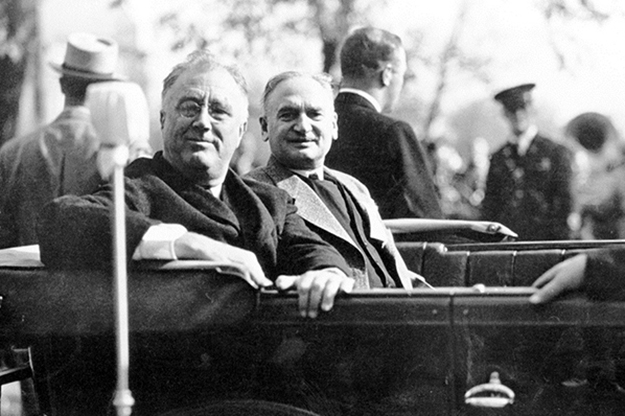
with Gov. William Langer in 1937
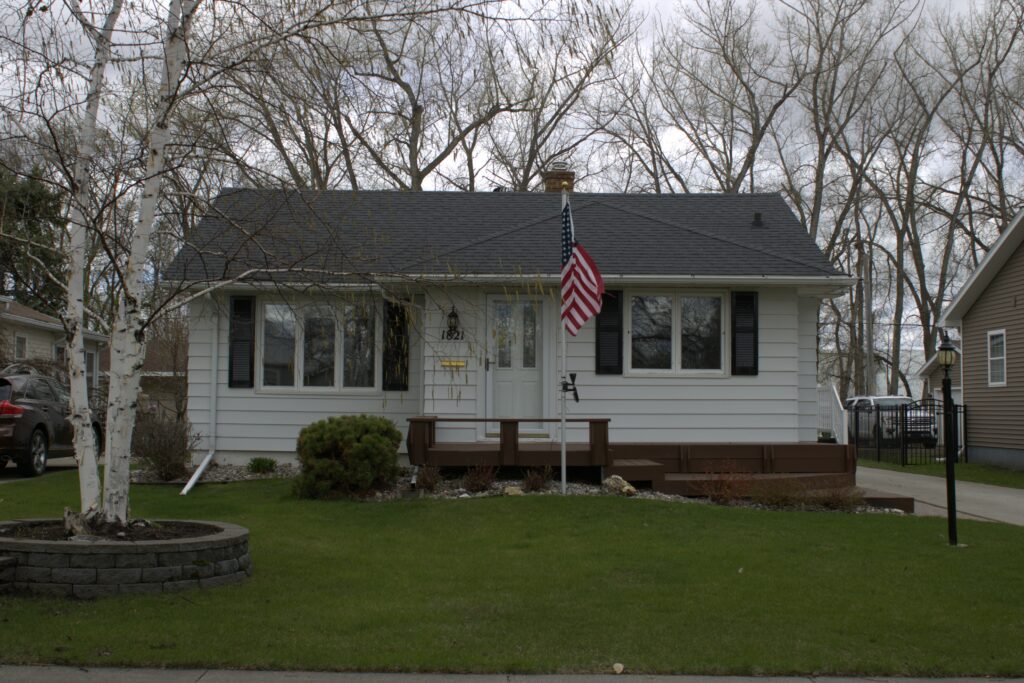
contractor/developer Addition
Baukol Historic District
Susan Caraher
A small residential development tucked into the Riverside neighborhood is Grand Forks’ first postwar multi-property development. Returning serviceman and contractor, Brooks Baukol, partnered with several financial backers to purchase approximately forty lots along North Third St and North Forth St between Park and Alpha Avenues. Twenty-two building permits were issued to Baukol in 1946 and he set about constructing modest 800 sq. ft. homes that would meet the mortgage standards set by the G.I. Bill. This federal program was designed to help millions of returning servicemen get back on their feet with housing, education and job training. The second phase of construction in the following years illustrates the shift from early postwar subsidized housing to progressively midcentury styles including Ranch architectural designs, attached garages and low elevation with orientation towards the street. The 1950 census data show that every home occupied at the time of the census was veteran households.
Grand Forks’ Midcentury Schools
Susan Caraher
Grand Forks’ midcentury schools embody a period of the country’s history marked by sharp population increase, postwar prosperity, and an active national building program. The postwar baby boom, coupled with a trend of rural migration to towns and cities, precipitated the need for more schools. Between 1948 and 1967, the City added eight elementary schools, two middle schools and a high school as neighborhoods expanded to the south and west. They maintain a common architectural canon typical of the Modern movement characterizing mid-twentieth century American public architecture. The one-story brick structures with flat roofs show a distinct departure from the multi-story schools of earlier decades. The new style reflected evolving educational principles emphasizing student learning and physical health as well as an efficiency of design and construction. Sprawling, low elevation designs replete with long banks of windows maximized natural light and often overlooked landscaped gardens, playgrounds or nearby public parks.
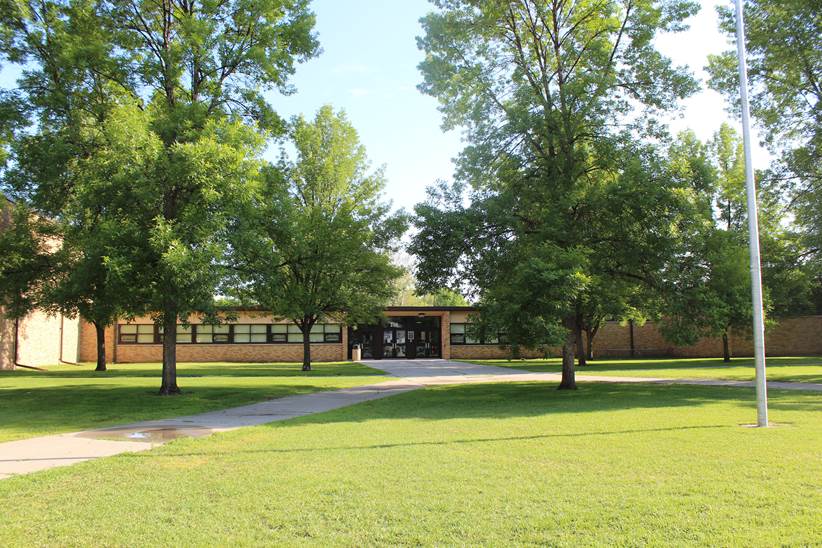
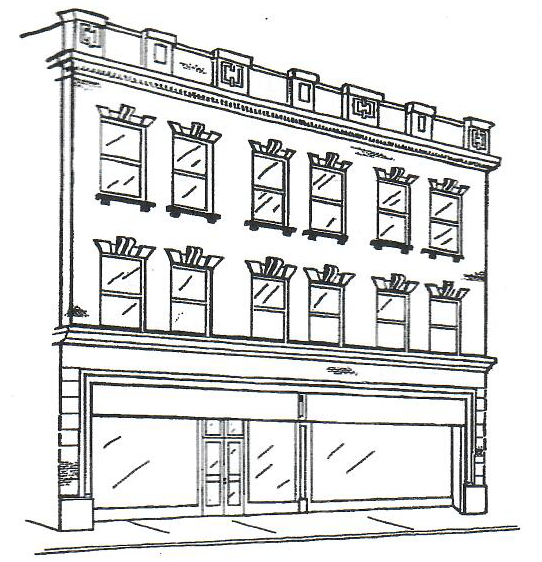
Golden Hour Halibut
Courtesy of Grand Forks County Historical Society
Secret recipes are nothing new, but once in a while the memory of a meal takes on urban legend status. The Gold Hour restaurant was located in the old Elks Lodge (now the Olive Ann hotel). Golden Hour Halibut is one such recipe. A closely guarded secret for years, some claim to have the recipe, but are they all the same? Here is one, perhaps THE version.
Tip: thin sliced halibut cooks faster.
Flour Mixture:
1 Cup Flour
½ Teaspoon Salt
½ Teaspoon Black Pepper
½ Teaspoon Paprika
½ Teaspoon Poultry Seasoning
Directions:
Coat fish with flour mixture, shake off the excess, and put it on a plate lined with wax paper. Refrigerate for half an hour.
Add ½ Teaspoon Baking Powder to the remaining flour mixture. Then add enough cold water to form a thin batter. Dip the halibut fillets in the batter and deep fry until golden brown.
Traill’s Addition
Susan Caraher
Before Grand Forks County was surveyed, residents were regarded as squatters. But in January 1874, land was officially opened to settlement. One of the earliest plats in the developing township was Traill’s Addition bounded by Belmont Rd and Cottonwood St between 1st and 4th Avenues South, which became a predominately Jewish neighborhood. The original deed was signed in October 1878 by landowner, Walter J. S. Traill, a Canadian who had worked as an agent for the Hudson’s Bay Company at multiple posts including Grand Forks. He was briefly imprisoned due to his part in the Louis Riel Rebellion at Fort Garry in Manitoba, and was subsequently expelled from Canada in 1870. Traill’s Addition is believed to be the first plat to align with directional cardinal points rather than those that follow the general direction of the Red River such as the Original Townsite that locates the mercantile center of downtown.
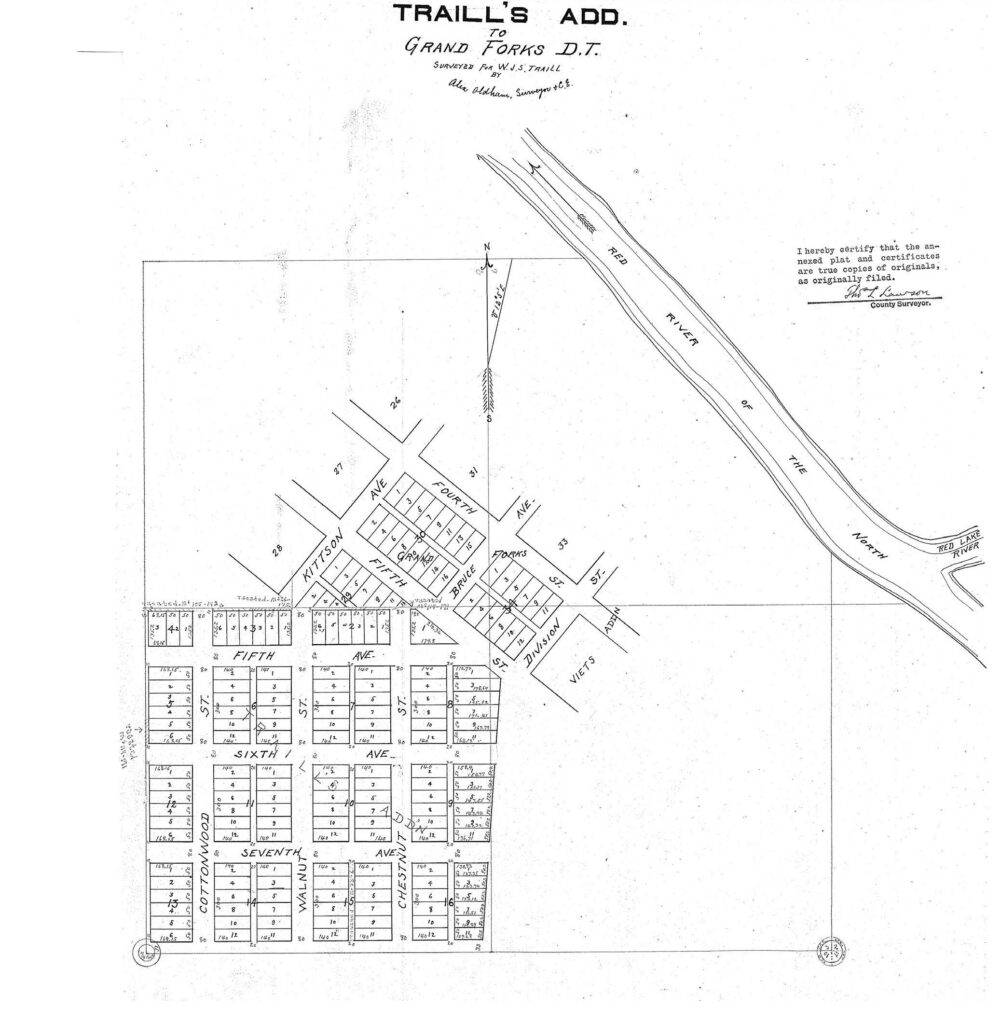
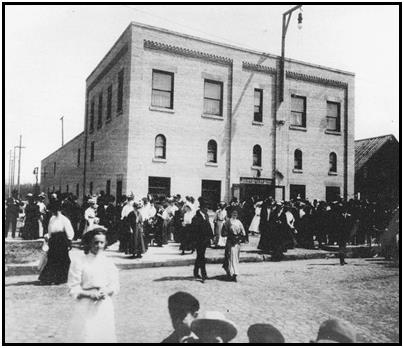
Jack’s Roller Rink
Susan Caraher
Jack’s Roller Rink was located at the corner of N. Fourth Street and University Avenue. Constructed in 1907, it was designed by Crookston architect, Bert Keck. One of several entertainment venues in downtown built during the early decades of the city’s growth, it had a vast flexible space that could be used for dances, an orchestra and wrestling exhibitions. It served as a temporary venue for church services when nearby St Michael’s Church suffered a fire. Other activities and businesses include the Marble Works for cemetery markers, a confectionery store and winter vehicle storage. In 1948, it was the front was remodeled for Forx Motor Company to create a showroom. In the 1950s, the building was identified as a potential fallout shelter with its 18” concrete and steel floor between the main floor and the basement. Jack’s and its adjacent buildings were razed to make way for a multi-use development.
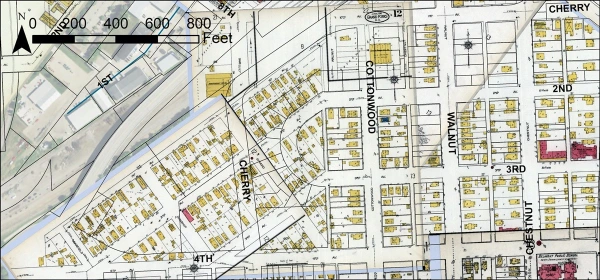
Lost Jewish Neighborhood
Susan Caraher
The inner city neighborhood just south of the Great Northern Rail Road tracks was razed in the late 1960s and early 1970s as part of the City’s urban renewal efforts. This largely immigrant neighborhood was originally home to the City’s largest concentration of Jewish residents as well as the first Synagogue and Jewish school. Emigrating from Lithuania in 1892, part of Czarist Russia at the time, Rabbi Benjamin Papermaster served both the local Jewish congregants and many throughout the region for more than 40 years. By the mid-1930s, the Jewish community had started to move out of the neighborhood and in some cases, out of the City. The demolition of houses and small businesses made way for the Grand Forks Housing Authority accommodations, the Grand Forks Senior Center, the Grand Forks Police Station and the DeMers Overpass that shifted much of the commercial activity from downtown to South Washington Street.